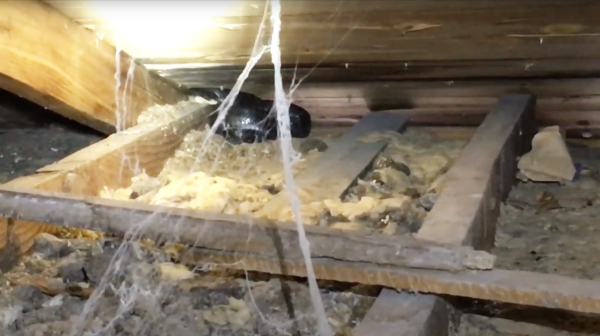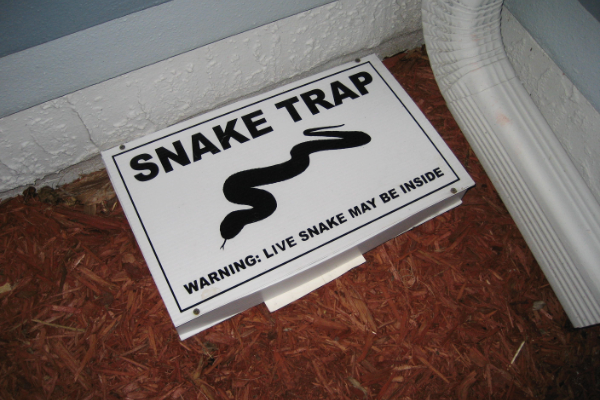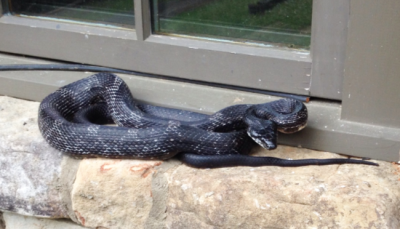How to get Snakes out of your Attic

Perhaps you’ve noticed some snakeskin or snake droppings in your attic, or maybe you’ve actually come face to face with a snake up close. Often times snakes are drawn to attics due to families of rodents already living there, thus providing an excellent food source. Other reasons include the warm temperature of the attic as well as its general isolation from human activity.
Most likely the snake in your attic climbed the outer fixtures of your home and snuck through some small opening in the roof. Snakes are often times excellent climbers, however, some of the best climbers are also venomous species of snake, so it’s very important to first identify the species of snake in your home. From there you can proceed with one of the following options to rid your home of the snake.
Wait for the Snake to Leave
Make sure that the entrance to the attic from the rest of your house is adequately sealed using duct tape, or whatever temporary method works for you. Then simply give it some time and wait for the snake to leave on its own accord. Provided your attic isn’t also home to a family of rodents the snake could subsist on, it will eventually leave the same way it entered, at which point you can seal the roof opening ensuring no visitors return.
When sealing openings, you can use either a bit of mesh wire or expanding foam sealant, both of which will keep snakes out. Snakes are unable to chew, therefore anything blocking the entrance will be a deterrent for them.
Set a Trap

Several versions of snake traps are available for purchase including glue traps, live traps and minnow traps. Glue traps are considered to be the least humane of the three, and if you decide to use a glue trap it is important to check on the trap regularly so the animal does not have to suffer needlessly while stuck in the trap. Live traps and minnow traps are both designed to allow the snake to enter but not escape. These traps work best if a small piece of meat or cooked egg is placed in the back of the trap to lure the snake inside.
Regardless of what trap you use, you should check it daily in order to free the animal as quickly as possible. Once you’ve caught the animal in any of these traps, it will be rendered unable to lash out at you. Still, make sure you wear thick gloves and cover all skin before transporting the snake in the trap back to the outdoors, as it may be a venomous snake after all.
Capture it Yourself
If you’ve been able to confidently identify the snake in your attic as non-venomous or posing a relatively minimal threat, then your quickest option will probably be to capture the snake by hand. In preparation for this you want to make sure you’re wearing thick gloves, long sleeves, jeans and generally have no skin showing just to be safe.
From this point you can use a broom to guide the snake into an open container with a lid, such as a bucket or a small trash can. Another option is dropping a towel down onto the snake to capture it and then transferring the snake into a container with a lid to be transported outside. Make sure you have a relatively easy exit strategy set up between the attic, climbing down into the lower levels of your house, and then outside, so as to limit your stress while transporting the animal.
Once the snake is outside, make sure to inspect your attic for any openings and seal them to prevent any more intruders. It’s also important to inspect the area for any rodent families that might still be living there to remove the incentive for an attempted snake return.
